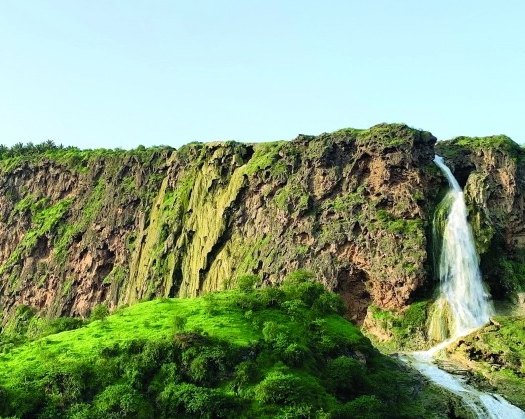Mist clings to Wadi Darbat's lush slopes at dawn. Waterfalls fall into pools, providing a soothing sound of Khareef Dhofar Season. Tourists congregate for photographs, while families picnic under old trees. But for those who remember the valley half a century ago, Darbat's tale is more than simply breathtaking scenery—it is one of endurance, community, and a continuing relationship between nature and mythology.
Khayar bint Salem Mahad, 85, is one of those voices, and she is considered a living witness to the valley's history. She recalls how Darbat served as the "food basket" for its population as well as for visitors traveling between adjacent districts.
"The land here was rich," she adds. "It supplied bananas, papaya, lemons, wild olives, and a variety of fruits and vegetables that supported life. "
Sweet potatoes and date palms were a staple. There were no vehicles, no paved roads. People lived by trade, exchanging crops for grain, fruit for drink, and providing nourishment for families and travelers.
The late Shaikh Ahmed bin Ali al Maashani's family was one of those who had strong roots in Darbat's history. According to Khayar, his family frequently helped local people during times of need.
However, Darbat's recollections are not limited to agriculture. It includes elements of folklore, like as the persistent faith in djinns. Khayar tells a story from the late 1940s:
A man from the Al Shahri tribe, which is thought to be one of the valley's first residents, claimed ownership of Darbat. When farmers declined to share their crop, he is said to have summoned djinns who lived there. According to the tale, he informed them: if the valley was truly his, allow them to take its water.
Villagers reported that the waterfalls had stopped by morning and that the water level had decreased dramatically overnight. Whether by chance or by supernatural intervention, the incident is ingrained in local oral history as a story of land conflicts, communal ties, and nature's mysteries.
Seasonal rainfall and natural springs supplied agriculture half a century ago. Generations planted whatever the terrain and environment permitted – bananas, citrus, root crops, and palms – ensuring food security for neighboring communities.
Today, Darbat is one of Oman's most popular natural destinations, attracting thousands of people from all across Oman and the Gulf. Tourism boosts the economy while putting pressure on the valley's fragile ecosystem.
Authorities, including the Ministry of Agriculture, Fisheries, and Water Resources and the Dhofar Municipality, are working to preserve indigenous flora, restore agricultural land, and conserve biodiversity. Efforts include planting wild olive trees, controlling water use, and limiting seasonal overcrowding.
"Darbat is more than just a beautiful view," says one conservationist. It's a living memory. " If we lose its balance, we lose its soul. "
As khareef's fog settles again over Dhofar's highlands, Wadi Darbat continues to flow through Oman's heritage - a place where elders remember days of barter and self-sufficiency, myth speaks of spirits guarding its waters, and the future is dependent on cautious management.








